In 2017, Guillaume Rocheron explained his work on GHOST IN THE SHELL. Today he tells us about his reunion with Godzilla for GODZILLA: KING OF THE MONSTERS.
How did you get involved on this show?
After being involved in Gareth Edward’s 2014 GODZILLA, Legendary invited me to meet with director Michael Dougherty when they were crewing up for KING OF THE MONSTERS.
What was your feeling to be back on the Godzilla universe?
It was very exciting because you don’t often get to work on a movie in which the title character is brought to life with visual effects. And with the addition of Ghidorah, Mothra and Rodan it was a great honor to bring such iconic characters and their long legacy into the 21st century.
How was the collaboration with director Michael Dougherty?
Mike is a huge Godzilla fan and has an immense respect fort the creatures and knows everything about their history. It made for a great collaboration when we were designing the shots and sequences and throughout post-production as we were crafting the performances and look of the shots.
What was his expectations and approach about the visual effects?
Mike’s mantra was that we needed to portrait the creatures as ancient gods, mythical beings. That had to show in the performances of the creatures that couldn’t be just rampaging monsters and in the look of the shots, where we took a lot of inspiration from Renaissance paintings of Greek mythology.
How did you organize the work with your VFX Producer, Maricel Pagulayan?
Maricel and I always looked into optimizing our workflow and how to assign the work in the most logical way in order to maximize the look development of the film. The environments and character assets were generally complex so we wanted to avoid too much crossover between vendors. We ended up sharing Mothra and Godzilla between MPC, DNEG and Method Studios but they developed those creatures in very different environments so it made complete sense.
Can you tell us more about the previs and postvis process?
Most locations were un-filmable or fictional and we obviously had giant creatures throughout so we tackled the movie very much as a hybrid live-action and virtual production. Because of the nature of the movie we did a huge amount of visualization that we basically treated as our blocking version of each shot with locked lensing, composition, blocking performances, lighting etc… We had quite a large team split between The Third Floor and Day4Nite. Along with their supervisor, we managed to make a lot of creative decisions upfront by involving myself, Mike the director, Lawrence Sher the DP and Zack Shields the co-writter in the process. It allowed us to understand the how the live action will fit in the full picture, how the bioluminescence of the creatures would affect the actor etc. In post, each vendor ingested the previs in their pipeline and used it to create their version 1 of each shot and start to plus the animation, lighting etc. instead of having to design from scratch.
How did you use your experience on the previous GODZILLA on this new one?
The first GODZILLA prepared me for the specificity of creating shots with giant creatures. The human point of view helps with the scale but there were many other tricks to convey scale without making the creatures move incredibly slow. The creature’s scale also meant that each shot would always require a tremendous amount of FX interactive elements between the creature, their environment and the natural elements such as rain and snow. We often used FX elements to show their relationship to gravity which is great visual indicator of scale. But that meant a lot of FX layers in every single shot. With over 3000 FX tasks, MPC assembled their largest FX team to date on a movie with almost 100 FX TDs.
What are the main changes with the Godzilla character?
Cosmetically, Mike wanted to change the dorsal spikes to be closer to the traditional star shape. We also update the proportion ever so slightly to allow for more aggressive body poses. Under the hood, MPC’s Character Lab made some significant advances with the details and subtleties of their facial rigs and eyes which was key in order to convey the creature’s personality without having to over animate them. Also, since we did the first movie, rendering has switched to path tracing instead of REYES which gave us much greater materials and lighting details and accuracy.
Can you explain in detail about the creation of this massive character?
The challenge was to make giant fantastical and non-anthropomorphic creatures emote realistically and looks like they belong to nature, in terms of their look and their motion. We tried to base all the textures and materials on real animals so our Titans would feel authentic. Their scale required the artists to put an incredible amount of details in each body part; from a human perspective, Godzilla’s nails are probably the size of a school bus so you have to make sure that each nail could hold up full frame on an IMAX screen.
The titans are really big. How does that affect the animation and lighting work?
There is a lot to factor in to never betray the scale but we found you can get motion that is quite fast as long as you have enough time to show its acceleration and deceleration. The camera work and the framing play a huge part in successfully making those creatures feel big. With lighting, the size is actually quite a fun thing to play with compositionally because you can play with a lot of intensity variations from cloud shadows, artificial light source falloffs etc..
Can you tell us more about the animation work, especially for Ghidorah?
Ghidorah was a unique challenge because each of his 3 heads has a different personality. From a performance standpoint, we studied wolf packs and we found that wolves generally revolve around their alpha. So we decided to introduce that in how the heads would move around each other. We also did some mocap studies at MPC and got some really interesting results by getting 3 actors to walk alongside each other and retarget their torso and head motion to the individual necks and heads. The goal wasn’t to produce fluid final motion but it showed us how 3 different brains perform the same action at the same time. Technically, MPC had to rework some of their rigging pipeline to allow 3 different facial rigs on the same characters, but also 3 necks, 2 tails and a set of wings.
Did you receive specific indications and references for the animations?
We studied a lot of animal references. Wolves, bears, crocodiles… To help inject personality and attitude for Godzilla and Ghidorah’s different heads, we did a couple of days of performance capture shoot with actors for each creature. TJ Storm played Godzilla, while Jason Liles played Ghidorah’s alpha center head, Richard Dorton played Ghidorah’s aggressive right head and Alan Maxon Ghidorah’s crazy left head. We were not looking to get any sort of mocap retargeted onto the monsters, like the modern version of the man in the suit, but we used the facial expressions and some of the body language as references for the animation team to inject a hint of human personality in select moments. It was a key to help our animators make our creatures realistic but also the heroes of the movie, the ancient gods that you want your audience to root for.
How did you handle the challenges of the size differences with the humans and the titans?
The complicated part was the framing of our human elements to allow for the titans to fit in the frame later on. With some of the creatures emitting bioluminescence or lightning, it was another element we had to get right. That’s where our previs became very important for the shoot so we could not only create eyelines for the actors and position localized light sources correctly but also ensure the physical camera had the correct amount of tilt and that its movement would work in relationship with the creatures. Lawrence Sher, the DP, used LED screens on which we could display sequences of colors and movement to emulate the titans bioluminescence.
How did you work with the SFX team?
Ghidorah creates his own weather system which means our actors had to be in the elements… a lot! Rain, snow, wind you name it… Eric Frazier, our SFX Supervisor did an amazing job at creating all of these. We shot most of the movie on soundstages or backlots so it all had to be created. Early on, we agreed that we would put as much practical elements as we could instead of protecting blue screens too much and attemps to add it in post. It helped the photography massively. For the Antartica scene for example, Eric scattered 170,000 pounds of espom salt on the ground to create the snowy field. Because we needed extreme winds, he used 3 special fans originally designed by his father, John Frazier, that were basically jet engines blasting winds up to 100mph. On top, Eric had to add a couple of gas-powered fans to could generate 70mph winds. Every scene was pretty much full on so we had to collaborate very closely to find out how to achieve the final look. There are a lot of flying vehicles in the film so on top of the natural elements, Eric had 2 motion-base: one programmable 16,000 pounds we would use for the F-22 fighter jet buck and another 100,000 pounds for the large Osprey buck. From our previs, we extracted the motion of the jets to Kuper data and programmed the movement of the motion base for each shot.
Can you elaborate about your approach and your work on this final battle in Boston?
Except 2 shots in the film, Boston is completely digital. The main reason behind that is that as soon as we are within Ghidorah’s storm, the lighting scheme is very stylized and unusual; impossible to us generate such lighting practically at the scale of a city. So we shot our actors on partial sets on a backlot in Atlanta and generated everything else digitally from there. We worked our previs out of a very simple model of the city, built from satellite imagery. Once we knew where the action took place, we sent a visual team led by Sepp Sonntag to photograph and scan the key sections of the city for our sequence. MPC built a full downtown Boston out of 50,000 photographs.
How did you split the work amongst the various VFX vendors?
MPC, led by Bob Winter and Spencer Cook for animation, was our main character animation facility and did most of the battle scenes with approximatively 635 shots. They created assets for Godzilla, Ghidorah, Rodan and Mothra as well as fully digital environment for Antartica, Isla de Mara, cloudscapes and stormy oceans for the Rodan aerial chase and a complete digital recreation of Boston for the 3rd act.
For the underwater scene and the destruction of Washington DC, we naturally went to DNEG because the complexity and scale of the environment and FX work. Brian Connor and his team had a big design with designing a sunken city from an old, forgotten civilization. DNEG also did all the vignettes of Titans awakening around the world as well as Mothra’s reveal behind the waterfall and when she appears over the ocean. These shots were creatively complicated because we had to find a satisfying balance of realism and surreal beauty.
Method Studios, led by Daryl Sawchuk, did the opening scene of the film, when we first see Mothra as a larva as well as the underwater base interior and exterior and the first encounter with Godzilla from the underwater base which required some one of look development.
Rodeo FX, led by Peter Nofz, did the ice cavern sequence, with Ghidorah trapped in the icewall and its destruction.
Yabin Morales and his team at Ollin VFX did a large number of shots, ranging from simple 2D fixes to CG clouds flythrough for the Argo scenes and timelapses of San Francisco and Las Vegas.
Last, Raynault VFX did the Mothra temple establisher at the start of the film and Savage VFX a few 2D fixes for some maps and screens.
Can you tell us more about your collaboration with their VFX supervisors?
I am a strong believer that a great team is what makes great work. I had very collaborative relationship with all our VFX and animation supervisors. Because we had the shots precisely planned from the previs stage, it gave everybody some solid creative foundation and confidence that their work to build upon it was going to end up in the movie. Of course, we were always open to our supervisors pitching ideas they thought would work best and I think everybody enjoyed the process.
Are there any other invisible effects you want to reveal to us?
There are a lot of computer screens in the movie and we decided to them practically instead of filling them in post. Rick Whitfield and his team literally create hundreds of them, sometimes creating a interactive or dynamic UI in Unity.
Which sequence or shot was the most challenging?
In 95% of cases, except bluescreen elements our actors in the foreground, a shot with a creature is completely digital. That meant digital environment, FX for the natural elements, FX for their interaction, the creatures themselves… We didn’t have a lot of easy shots on the film!
Is there something specific that gives you some really short nights?
There is so much that you always thinking about on a movie like this to ensure that everything will ultimately come together. But we went in with a solid plan and everybody delivered upon it.
What is your favorite shot or sequence?
I like many things that we’ve done so impossible to choose!
What is your best memory on this show?
When I saw people responding to the creatures as characters and not just as digital creations as we were fleshing out the animation and renders.
How long have you worked on this show?
Close to 2 years.
What’s the VFX shots count?
1535.
What was the size of your team?
On the production side, between myself, Maricel and our coordinators we were between 7 and 10 strong but you have to add to that 30 or so artists working in previs and close to 1500 artists and technicians on the vendor side.
What is your next project?
TBD!
A big thanks for your time.
WANT TO KNOW MORE?
MPC: Dedicated page about GODZILLA: KING OF THE MONSTERS on MPC website.
DNEG: Dedicated page about GODZILLA: KING OF THE MONSTERS on DNEG website.
Method Studios: Dedicated page about GODZILLA: KING OF THE MONSTERS on Method Studios website.
Rodeo FX: Dedicated page about GODZILLA: KING OF THE MONSTERS on Rodeo FX website.
Raynault VFX: Dedicated page about GODZILLA: KING OF THE MONSTERS on Raynault VFX website.
© Vincent Frei – The Art of VFX – 2019


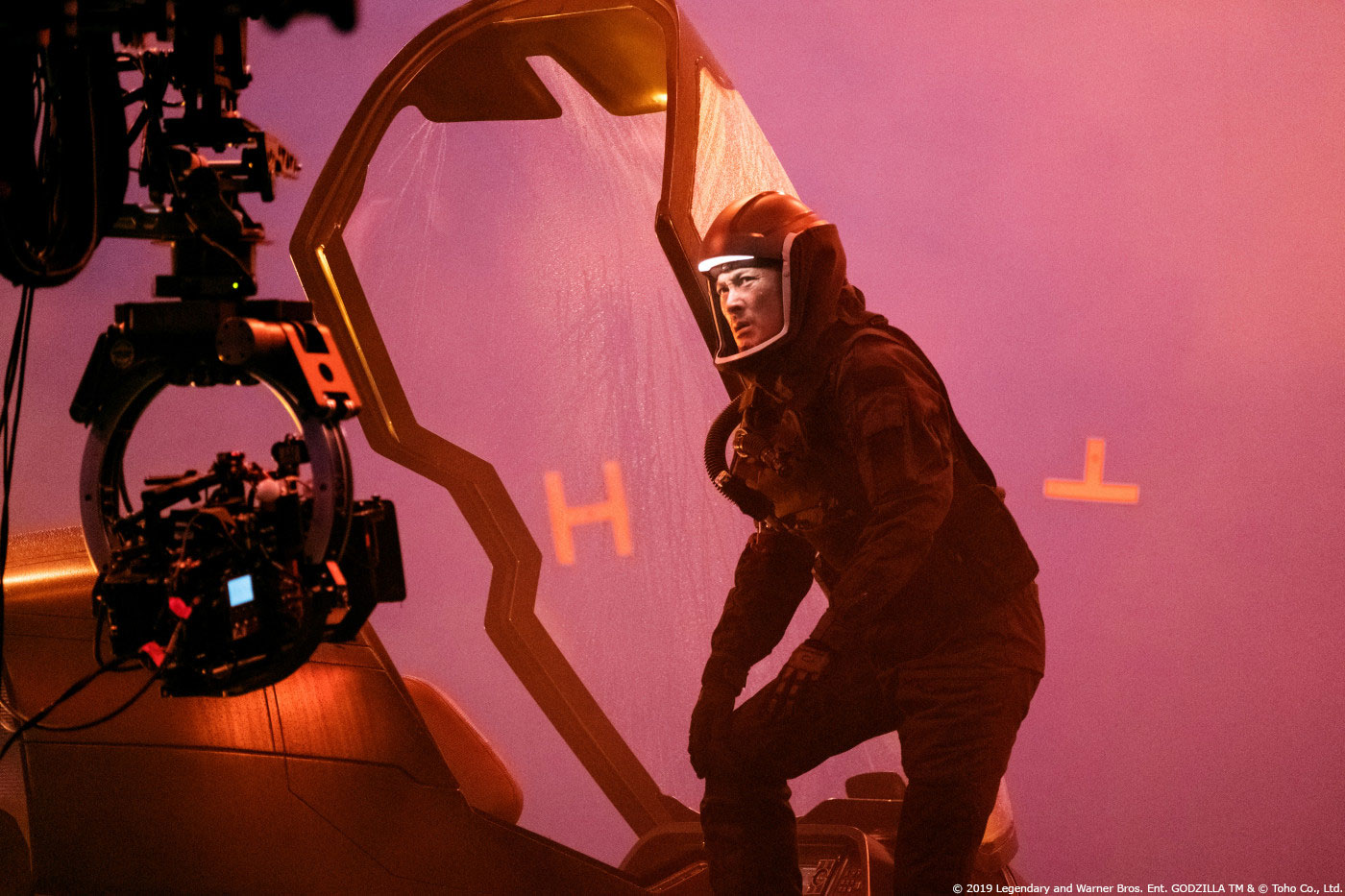
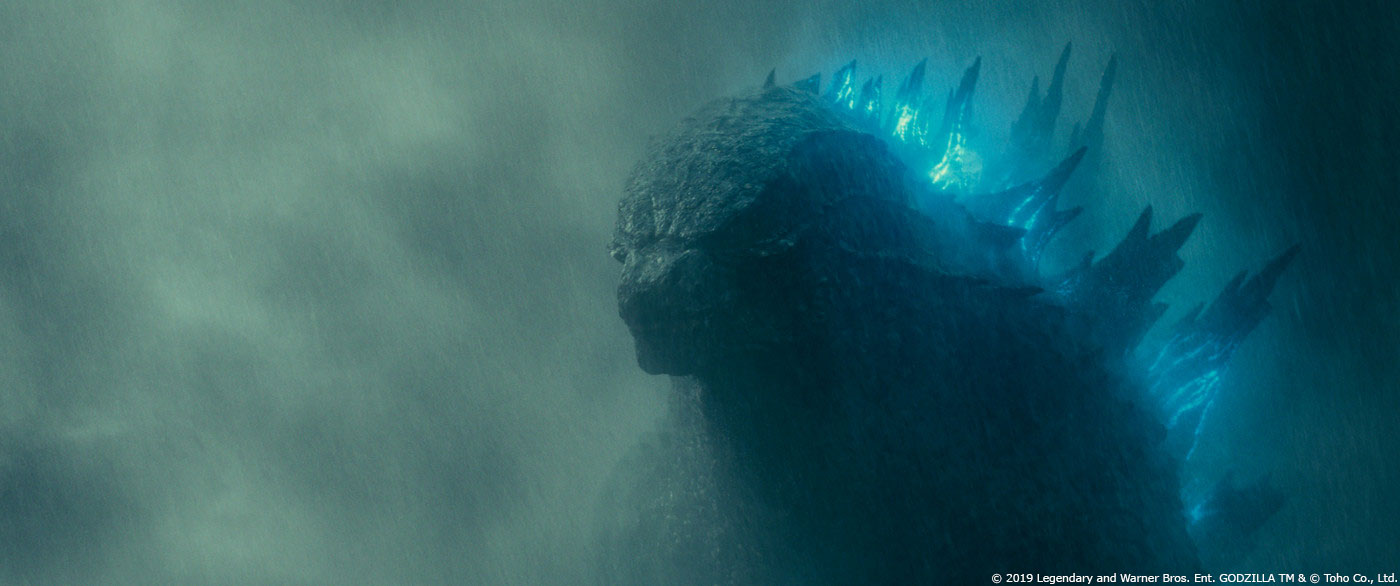
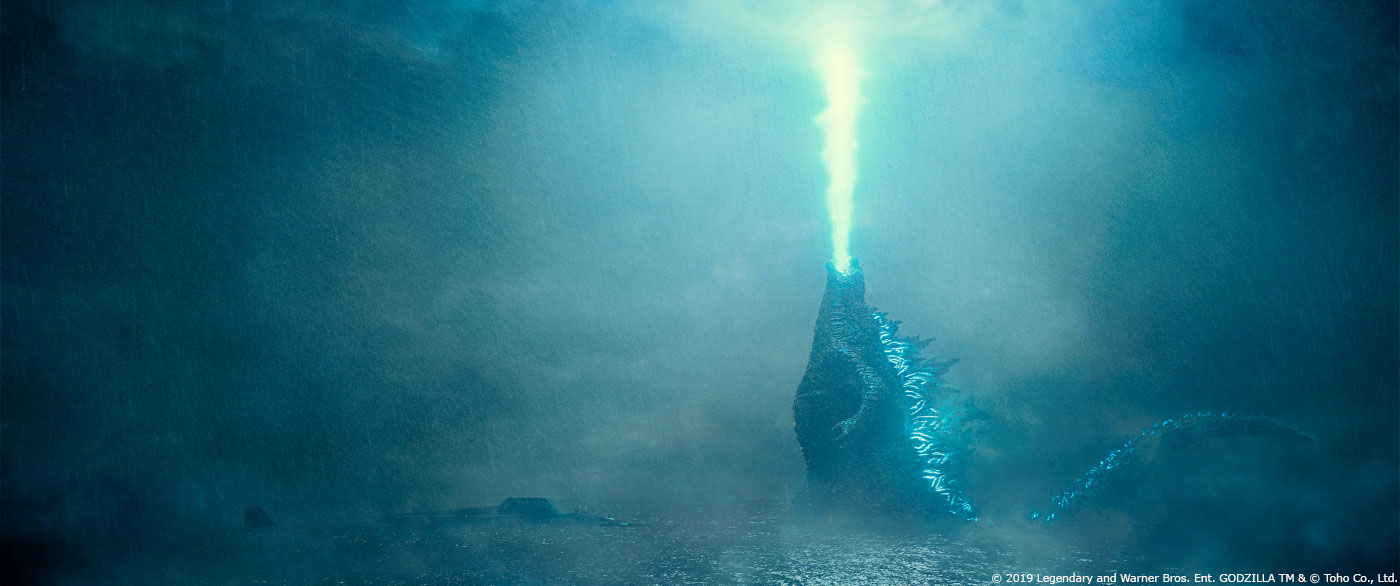
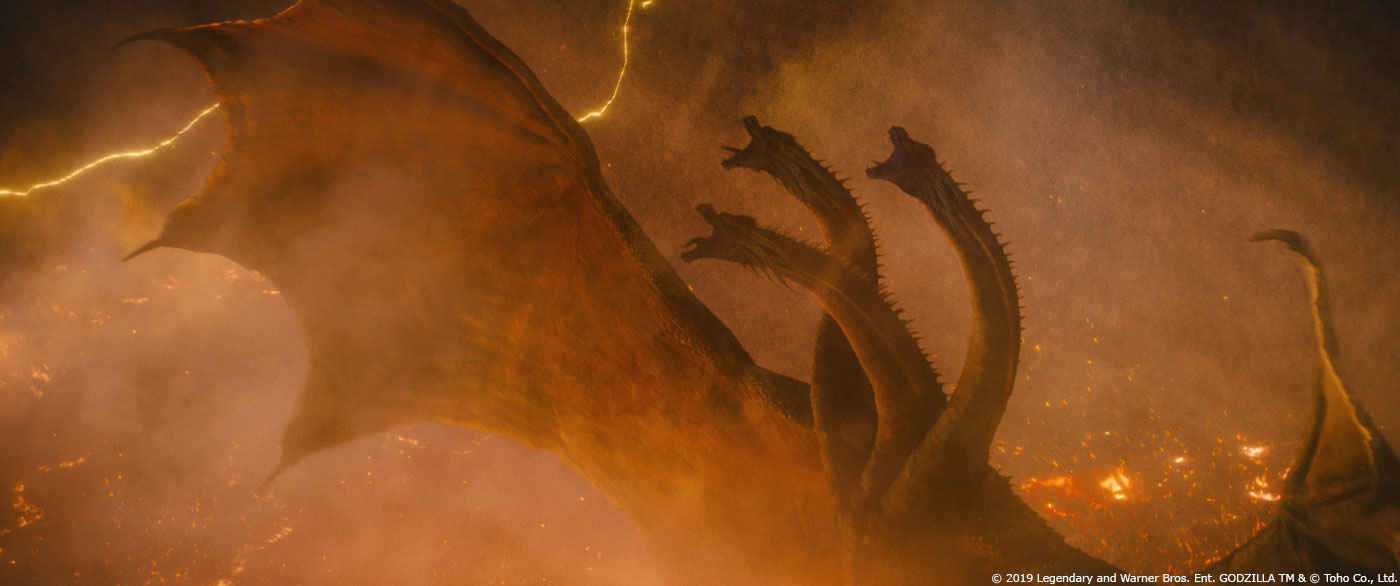
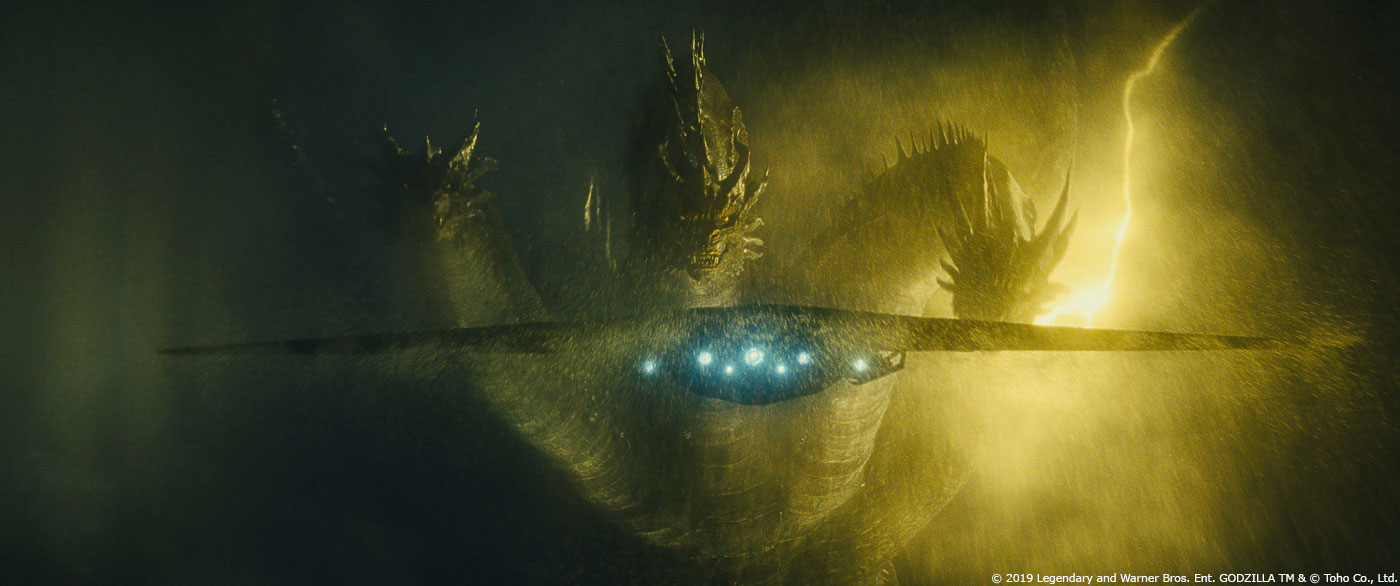
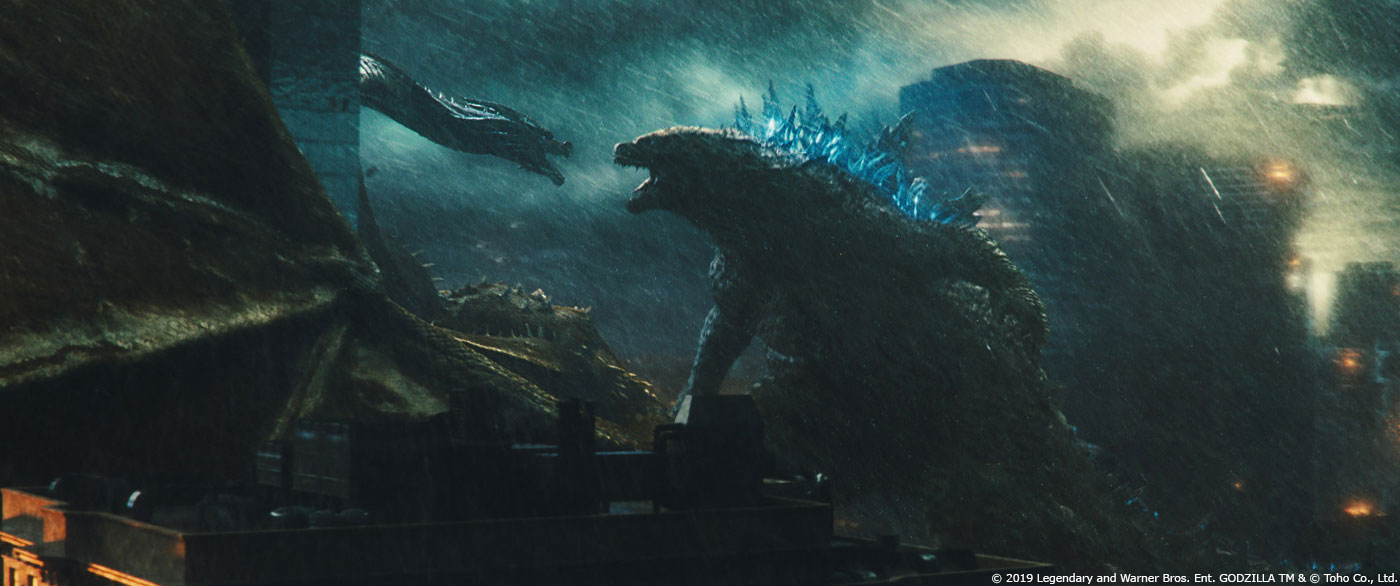



Fabulous reading. Saved the bucks from buying Cinefex!